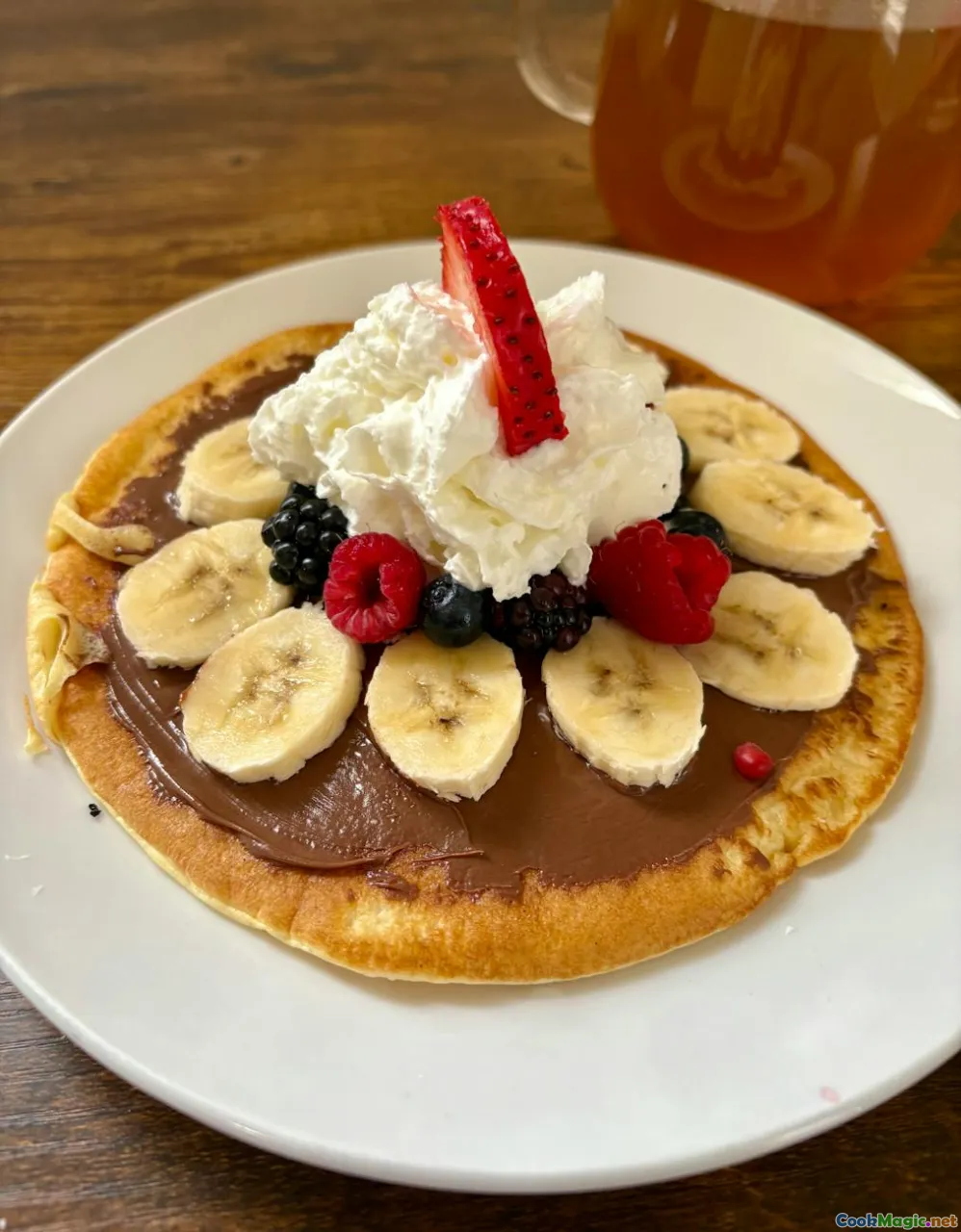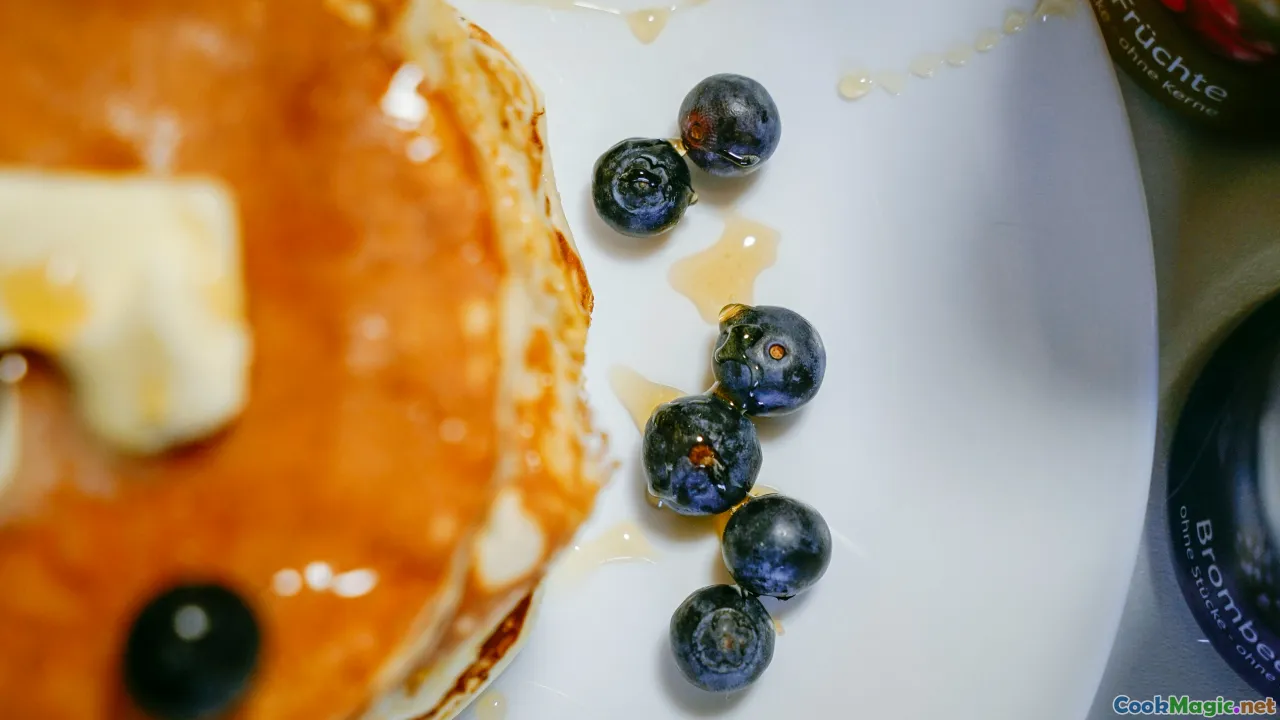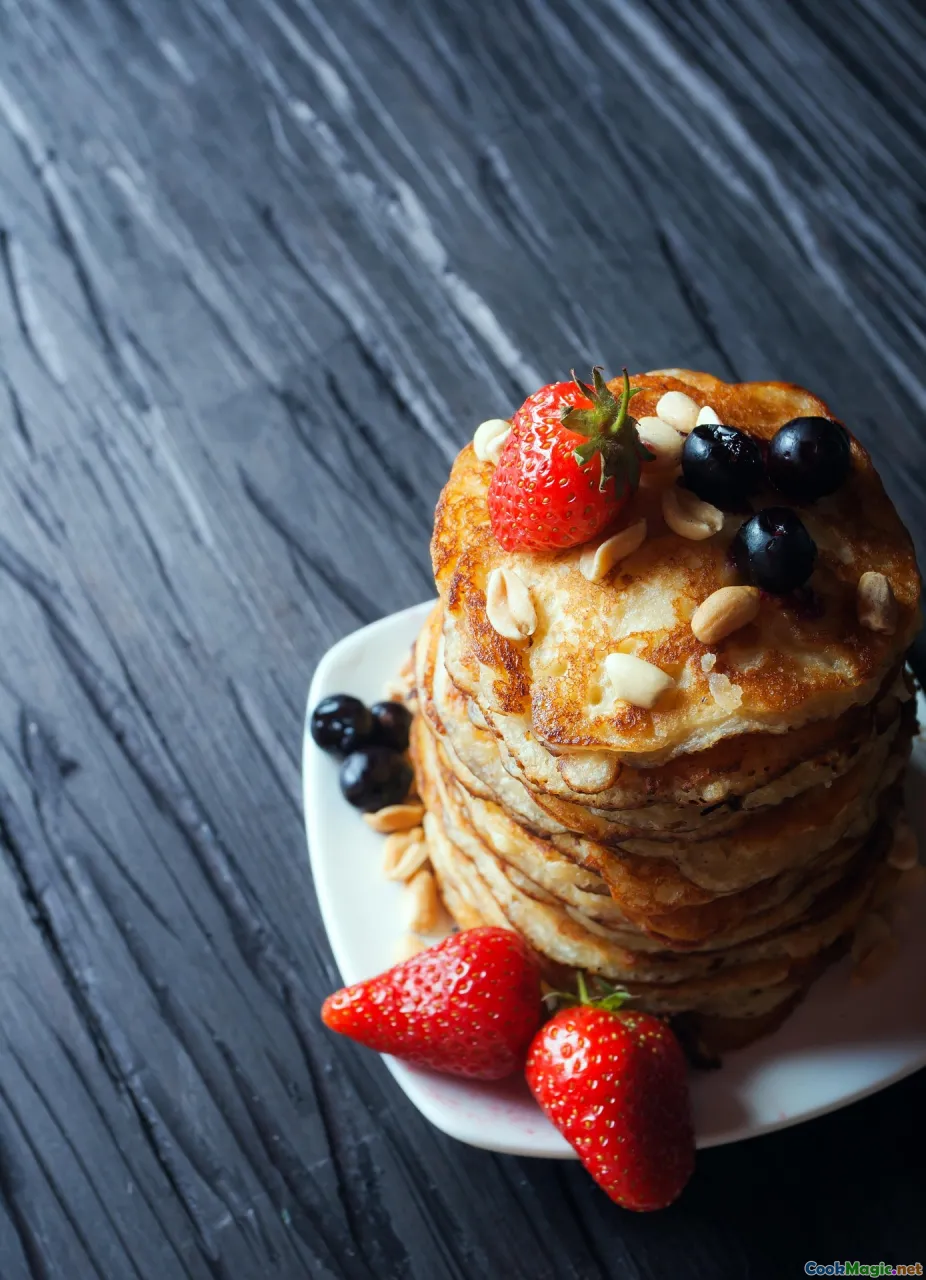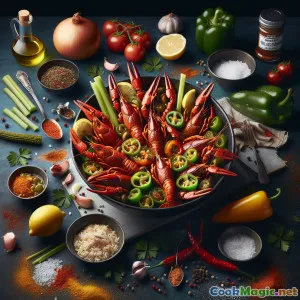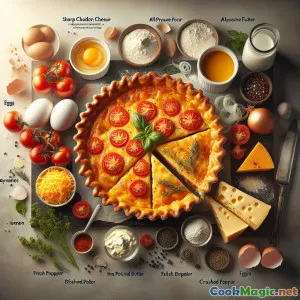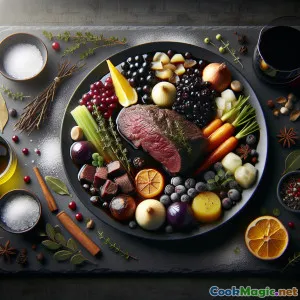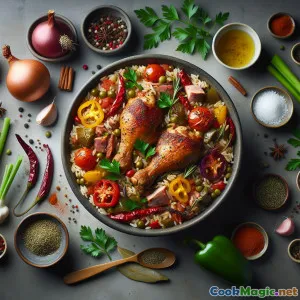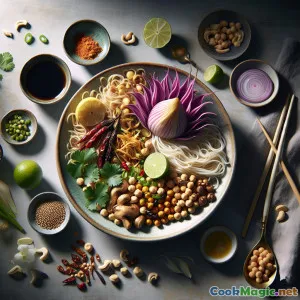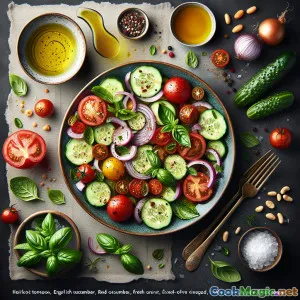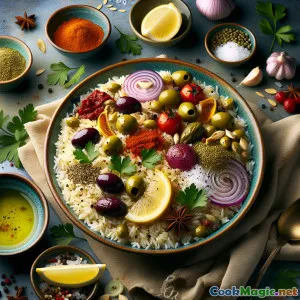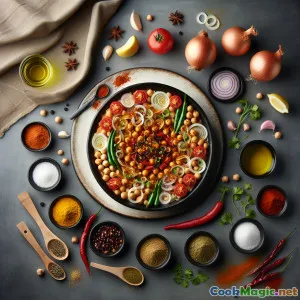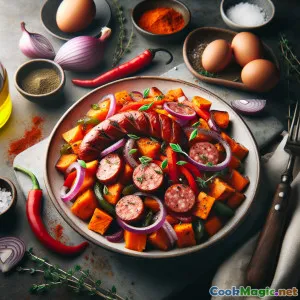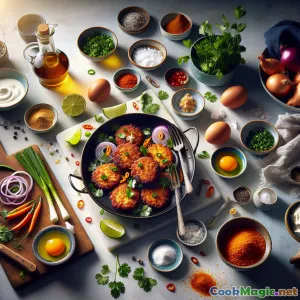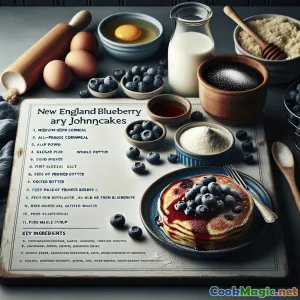
松软的新英格兰蓝莓约翰尼饼
(Fluffy New England Blueberry Johnnycakes)
(0 评论)食材
-
160 grams 中等研磨玉米粉
(Traditional stone-ground preferred)
-
60 grams 通用面粉
(Adds soft texture)
-
2 teaspoons 泡打粉
-
0.5 teaspoon 细海盐
-
2 tablespoons 糖
(For gentle sweetness)
-
1 large 鸡蛋
-
225 ml 全脂牛奶
(Can substitute half with buttermilk for tanginess)
-
3 tablespoons 无盐黄油,融化
(For rich flavor)
-
130 grams 新鲜或冷冻蓝莓
(Toss frozen berries with a little flour to prevent color bleed)
中性油或更多黄油, as needed
纯枫糖浆, to serve
(Traditional stone-ground preferred)
(Adds soft texture)
(For gentle sweetness)
(Can substitute half with buttermilk for tanginess)
(For rich flavor)
(Toss frozen berries with a little flour to prevent color bleed)
营养
- 份量: 4
- 每份大小: 2 medium cakes (about 150g)
- Calories: 310 kcal
- Carbohydrates: 49 g
- Protein: 7 g
- Fat: 9 g
- Fiber: 3 g
- Sugar: 11 g
- Sodium: 320 mg
- Cholesterol: 44 mg
- Calcium: 78 mg
- Iron: 1.8 mg
制作步骤
-
1 - Prep dry ingredients:
In a large bowl, whisk together cornmeal, flour, baking powder, salt, and sugar until completely combined.
-
2 - Mix Wet Ingredients:
In a separate bowl, beat together the egg with milk and melted butter until smooth and homogenous.
-
3 - Combine and fold in berries:
Pour wet ingredients into dry; stir until just combined. Gently fold in most of the blueberries, saving a few for topping.
-
4 - Rest batter:
Let batter stand for 5 minutes to hydrate flour and cornmeal. This yields extra-fluffy johnnycakes.
-
5 - Preheat griddle:
Meanwhile, heat a large skillet or griddle over medium heat. Lightly grease with oil or butter.
-
6 - Cook johnnycakes:
Pour batter onto griddle in 8cm circles (1/4 cup each). Dot with extra berries. Cook until edges look set and bubbles form (2-3 min); flip and cook 2 more minutes until golden.
-
7 - Serve Warm:
Enjoy johnnycakes hot off the griddle, drizzled with real New England maple syrup.
In a large bowl, whisk together cornmeal, flour, baking powder, salt, and sugar until completely combined.
In a separate bowl, beat together the egg with milk and melted butter until smooth and homogenous.
Pour wet ingredients into dry; stir until just combined. Gently fold in most of the blueberries, saving a few for topping.
Let batter stand for 5 minutes to hydrate flour and cornmeal. This yields extra-fluffy johnnycakes.
Meanwhile, heat a large skillet or griddle over medium heat. Lightly grease with oil or butter.
Pour batter onto griddle in 8cm circles (1/4 cup each). Dot with extra berries. Cook until edges look set and bubbles form (2-3 min); flip and cook 2 more minutes until golden.
Enjoy johnnycakes hot off the griddle, drizzled with real New England maple syrup.
关于 松软的新英格兰蓝莓约翰尼饼 :的更多信息
New England Blueberry Johnnycakes—Honoring Tradition with a Burst of Summer
Johnnycakes are an iconic food in New England—simple griddle cakes made primarily of cornmeal, often attributed to both indigenous Native American culinary practices and early colonial settlers. Classically, these humble cakes were just cornmeal and water, perhaps some salt, and required skilled hands (and fresh, stone-ground cornmeal). Over the centuries, New England cooks have jazzed them up following the rhythm of the seasons and influences of new ingredients—cue the blueberries for a bright, sweet addition echoing the region’s famous wild berries. My version maintains respect for history, with a couple of modern flourishes.
Brief History
Cornmeal has played a starring role in the American kitchen for centuries. Indigenous peoples cultivated and cooked with maize long before European settlement; early English colonists quickly recognized the value and adapted it into comforting porridges and cakes. The word “johnnycake” itself maybe a corruption of “journey cake,” these early cakes being perfect travel food: nutritious, portable, made from pantry staples. Their place in New England cuisine is almost as strong as clam chowder or Boston baked beans.
Unique Features and Ideas
Blueberries make these cakes undeniably summery and brunch-worthy—and they highlight a key produce of the region, juicing up the golden batter with sweet, tart pops. The blend of cornmeal and a touch of wheat flour creates soft but robust cakes, as the flour provides tenderness to counter cornmeal’s slight graininess. For true New England flair, you must serve with real maple syrup, ideally from Vermont or New Hampshire!
Tips for newcomers: Use medium or coarse-ground cornmeal (not corn flour, not instant grits) for authenticity and texture. Letting the batter rest is crucial; the meal needs that time to absorb moisture for perfectly plump johnnycakes. Don’t overmix after adding the wet ingredients – lumps are just fine and will disappear upon cooking.
If using frozen blueberries, toss them gently with a teaspoon of flour before adding to the batter to help prevent color run and purple streaks. Some families substitute part of the milk with buttermilk for tang—experiment to suit your taste!
These johnnycakes are naturally vegetarian; for a vegan twist, use plant milk and a flaxseed “egg” (1 tablespoon flaxmeal plus 2.5 tablespoons water, left to gel). They make a nourishing gluten-free treat by swapping in a respected, cup-for-cup gluten-free blend for the flour.
Serving Suggestions
Johnnycakes are calling for a sunny weekend breakfast—serve with soft butter, a flurry of extra fresh berries, and warm maple syrup. Pair with sausages or crispy bacon if desired, or offer a dollop of yogurt and crushed toasted pecans for luxurious brunch vibes.
Why not take them on a picnic—the slightly sweet, berry-studded flavor and sturdy yet tender texture mean they travel well. Or serve them to overnight guests as the taste of true New England hospitality.
Cultural Significance & Personal Thoughts
Johnnycakes, in all their variations, connect us to American foodways before supermarkets and processed bread. They are the story of adapting, of nourishing, of ingenuity in the kitchen. Adding blueberries—a native fruit—makes this even more of a celebration of place. For me, blueberry johnnycakes recall family visits to Cape Cod, leisurely breakfasts when a briny sea breeze blew through open windows and the stack of golden, generous cakes disappeared too quickly.
They are tradition and joy, history that you can eat, right off a hot skillet, syrup dripping on your fingers. Try these Blueberry Johnnycakes: they’re quick, clever, wholesome, and truly New England.
Bon appétit—or as we say up north, "Have some cake!"

